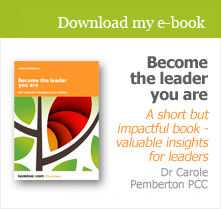David Hockney, painting, and coaching

Art as nourishment
I recently had the opportunity to visit the stunning David Hockney exhibition in London (‘David Hockney: Bigger & Closer (not smaller & further away)’. It’s a personal journey through sixty years of his art, narrated by Hockney himself, as he gives us a commentary on the context for, and content of, particular periods or particular works. Beautifully curated, it offers the visitor a visual and auditory wrap-around experience of truly ‘being with’ his art – and it prompted reflection for me both on what it offers to my conceptualisation of coaching and what I can learn that might enhance my clients’ experience of coaching with me.
The exhibition and its impact for me
I found the exhibition spellbinding, not only because of the paintings – their form, their colours, their composition, the ways in which they conveyed core ideas – and the narratives themselves, but also because of how I experienced it somatically as well as intellectually: a deeply personal experience that was nourishing, exciting, inspiring, refreshing, perspective-opening and deeply calming. Having named those to myself, I realised that those facets reminded me of various clients’ feedback on their experience of being coached by me. I became deeply curious about what I might do to enable even more of that for them. How can I offer or facilitate more colour, more depth, more impact?
Perspectives and seeing
Hockney reflected on how he relates to, and uses, different kinds of perspective: vanishing perspective (how objects seem to get smaller, the further in the distance you see them), isometric perspective (the representation of a three-dimensional object in two dimensions, making it appear three dimensional), and reverse perspective (in which further objects are depicted as larger, and closer objects are depicted as smaller).
He reflected too that there are many ways to look at things, that we need to really look – and that we typically see in bits. That prompted my own thinking about how I might raise my awareness and challenge myself to look in more depth, and call on more perspectives and insights, with clients. Is there any sense in which I currently satisfy myself with looking partially, on a relatively small scale, or only in one perspective? Could the client experience their situation in more vivid colours and with more options and possibilities, a broader perspective, and more holistically, if I widened my vision? It’s hard to contemplate that they wouldn’t.
Looking in every direction
Besides widening our perspective, the artist also highlights the rewards of looking in every direction at the same time, all the time. Setting aside the apparent impossibility of actually accomplishing that, I find the concept both stimulating and exciting. What if I did look in every direction – or at least in more directions – and made that a systematic part of my coaching practice? Given that I could find a way of neither overwhelming nor confusing the client, might that too open up their options, reduce assumptions and judgments for us both, and stimulate the client’s capacity to manage and expand their close-up view of a challenging or dismaying situation?
Water is an illusion
Hockney – as he talks about painting swimming pools (which are amongst the images he’s so famous for) – characterises water as illusive, because all the patterns you see are on the surface. That intrigues me, because it suggests that there are also patterns you don’t see, and that are beneath the surface, at a variety of depths, and subject to a variety of currents. It resonates deeply for me too: in a sense, the client brings their ‘surface self’, and the patterns on that surface, to the coaching encounter. But if, as coach, I take those patterns as the only patterns, then I’m only seeing, let alone working with, part of the person I’m working with, and only some of the influences they’re subject to. Importantly, so too are they. On the other hand, I need to be radically inclusive if I’m to enable the contemplation of the broad perspectives that make up the client’s life. By only working with what shows on the surface, I’m also lacking humility. And humility can open up important views and possibilities for change.
Painting ‘Portrait of an Artist (Pool with Two Figures)’ by David Hockney 1972


